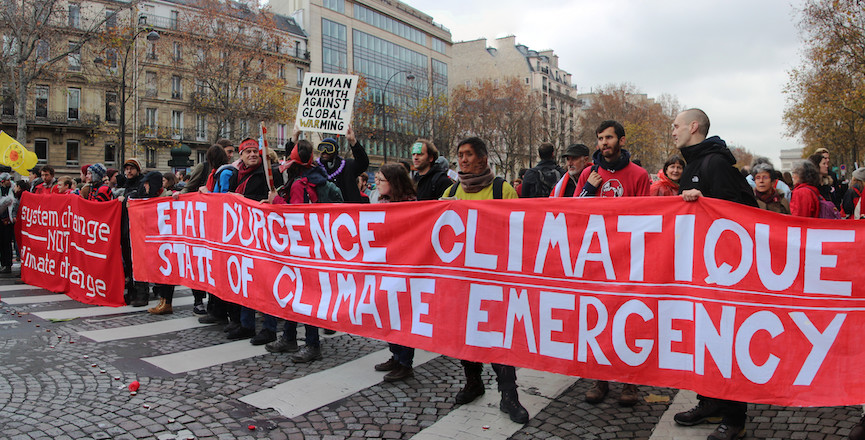The United Nations COP25 climate summit began this week, and is set to run through December 13 in Madrid, Spain. Jonathan Wilkinson, Canada’s new environment minister, will be in attendance. What will his message to the world be, given the Trudeau government’s dismal record on carbon emissions?
An annual report on emissions from the UN now says that Canada’s emissions are projected to be 592 megatonnes in 2030. That’s the figure that was projected by the Parliamentary Budget Officer (PBO) this past June.
That may be an optimistic calculation. In March 2017, Environment Canada projected that Canada would emit between 697 and 790 megatonnes in 2030.
Even if we work with the lowest public figure, the Trudeau government is still falling short of its own promise and the imperative to do more. The House of Commons will reconvene on December 5, just a few days after COP25 starts.
In order to avert further climate breakdown, Canada must take emergency action to dramatically reduce emissions. Key measures would include cancelling two tar sands pipelines, committing to keep the oil in the ground, and eliminating billions of dollars in fossil fuel subsidies to transnational oil and gas corporations.
As COP25 kicks off, and the House of Commons resumes this week, here are the numbers Trudeau government’s climate policy failures.
592 megatonnes, not 512 (Paris Agreement)
Under the Paris Agreement, the Trudeau government pledged to reduce Canada’s emissions by 30 per cent below 2005 levels by 2030. Given Canada’s emissions were 731 megatonnes in 2005, a 30 per cent reduction would mean a 2030 target of 512 megatonnes. This number has also been reported as 513 megatonnes.
592 megatonnes, not 381 (UNIPCC)
In October 2018, the UN Intergovernmental Panel on Climate Change said carbon emissions must be cut by 45 per cent from 2010 levels by 2030 to keep global warming from rising about the critical 1.5 degrees Celsius mark. Given Canada’s carbon emissions were 692 megatonnes in 2010, that would set a 2030 target of 381 megatonnes.
592 megatonnes, not 450 (NDP) nor 292 (Green Party)
The Green Party of Canada has called for emissions to be cut by 60 per cent below the 2005 amount by 2030, meaning about 292 megatonnes cut. The NDP calculated that their plans would cut emissions to 450 megatonnes by 2030.
592 megatonnes, not zero
Extinction Rebellion has called for net zero emissions by 2025, environmental groups have called for net-zero emissions by 2040, and the IPCC says emissions must be eliminated by 2050. Canada is still far from zero emissions.
Keep it in the ground
Back in January 2015, British researchers stated in a report published in the journal Nature that three-quarters of its oil reserves and 85 per cent of the tar sands would need to say in the ground in order to stay below the then two-degree Celsius target. Now, 1.5 degrees C is viewed as the preferred target.
The Trudeau government’s approval of both the Line 3 and Trans Mountain pipelines in 2016 signals the federal government is not committed to keeping fossil fuels in the ground.
Line 3 adds 19 to 26-plus megatonnes
On December 1, the Line 3 pipeline from Alberta to Manitoba became operational. The American portion of the pipeline is expected to begin service in 2020. When that portion is completed, the pipeline will have an export capacity of 760,000 barrels per day.
The Line 3 pipeline is expected to result in 19-26 megatonnes of upstream carbon pollution per year and a larger number of downstream carbon emissions.
Trans Mountain adds 92.4 to 97.4 megatonnes
Furthermore, the federally-owned Trans Mountain pipeline, once expanded, will move 890,000 barrels per day. The expanded pipeline should be in service by mid-2022 and is expected to emit between 21 and 26 megatonnes of emissions each year and 71.4 megatonnes of downstream carbon equivalents.
Brent Patterson is a political activist and writer.
Image: John Englart/Flickr



